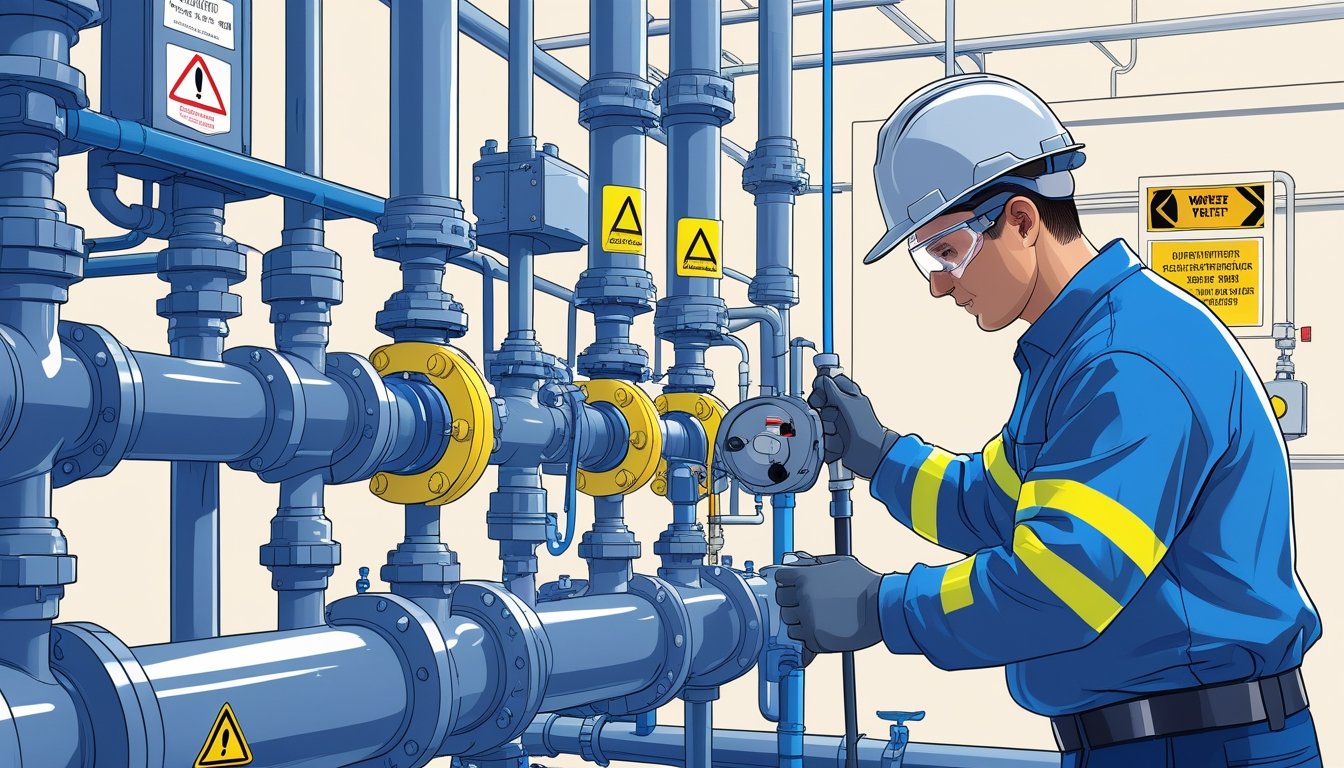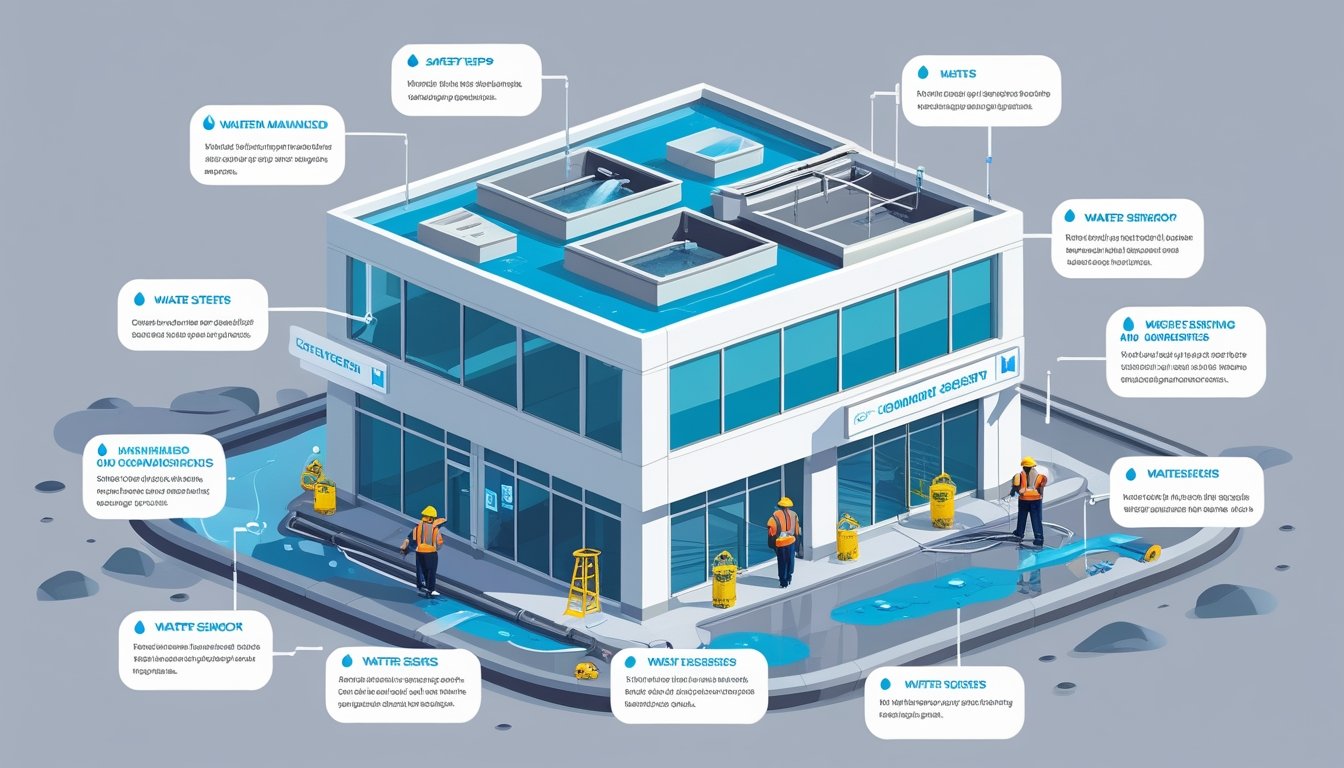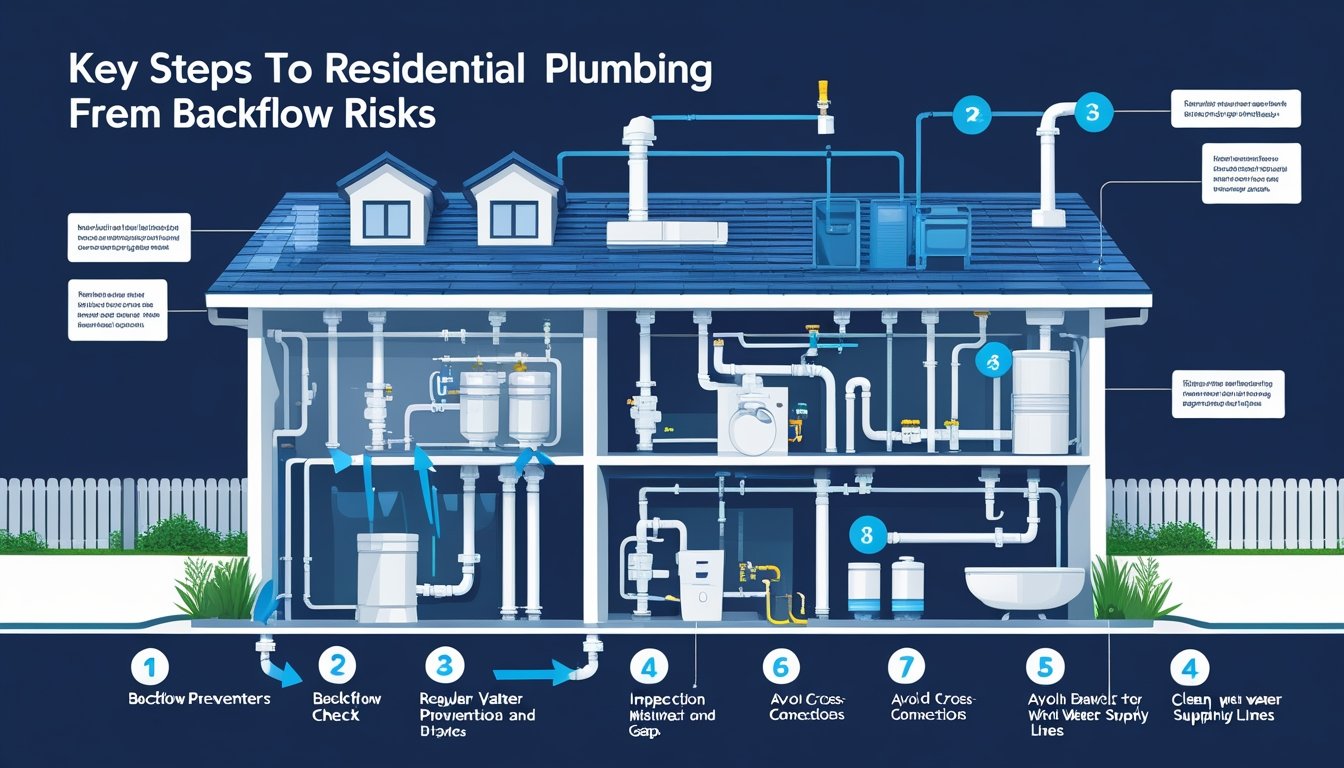Knowing how clean your tap water is can significantly impact your health and well-being. Many people assume their water is safe, but contaminants can still be present. You can take proactive steps to ensure your tap water meets health standards and is safe for your family.
By understanding local water quality reports and testing options, you can gain valuable insights into what’s in your water. Resources like the EWG Tap Water Database can help you identify pollutants that may be a concern in your area. Additionally, Pacific Backflow offers expert backflow testing services to ensure your water supply remains uncontaminated and compliant with local regulations.
Investing in the safety of your tap water not only protects your health but also contributes to the well-being of your community. You can rely on professionals like Pacific Backflow to handle your backflow testing and repairs, ensuring your water system stays clean and functional.
Understanding Tap Water Quality
Knowing the quality of your tap water involves understanding the basics of its composition and the regulatory framework governing its safety. Various contaminants can affect water quality, and the Environmental Protection Agency (EPA) plays a critical role in ensuring that drinking water meets safety standards.
Basics of Tap Water
Tap water originates from various sources, including rivers, lakes, and groundwater. During processing, municipalities typically treat water to remove harmful substances. Common methods include filtration, chlorination, and fluoridation.
Despite treatment, tap water can contain contaminants like bacteria, heavy metals, and chemicals. These may enter the water supply through agricultural runoff, industrial discharges, or aging infrastructure.
To ensure safety, the EPA sets standards for drinking water, outlining permissible levels for various contaminants. Regular testing is essential for monitoring water quality, and you should be aware of results from your local Consumer Confidence Report (CCR), which details the quality of your water supply.
Regulatory Oversight by the EPA
The EPA is responsible for enforcing the Safe Drinking Water Act, which mandates certain standards for water quality across the United States. This agency monitors drinking water data and ensures systems comply with established health guidelines.
Utilities are required to test water quality regularly and report their findings. If contaminants exceed allowable limits, utilities must inform customers about potential risks and corrective actions taken.
As a resident in San Diego County, staying informed about local water quality and any changes is crucial. Services from professionals like Pacific Backflow can help ensure that your backflow prevention systems are functioning correctly, helping to maintain the integrity of the water supply while you enjoy safe drinking water.
Health and Safety Standards for Drinking Water
Maintaining the health and safety of drinking water is crucial for public health. To ensure safe drinking water, regulatory frameworks and standards are established, addressing various contaminants and health risks.
Safe Drinking Water Act
The Safe Drinking Water Act (SDWA) is a pivotal piece of legislation in the United States that governs the quality of drinking water. Enforced by the EPA, this act sets legal limits on various contaminants, ensuring that public water systems deliver safe drinking water.
Under the SDWA, the EPA monitors over 90 contaminants, including harmful chemicals and microorganisms. The act requires regular testing and compliance from water suppliers, creating a framework to protect water quality nationwide. It also mandates that states develop and enforce their own drinking water standards, tailored to local needs.
Public Health Implications
The safety of drinking water directly impacts public health. Contaminated water can lead to severe health issues, including cancer and other chronic conditions. Consuming unsafe water puts individuals at risk for gastrointestinal diseases, reproductive problems, and developmental delays in children.
Reliable testing and compliance with health standards help prevent these threats. For instance, annual backflow testing by professionals, such as those at Pacific Backflow, can ensure that your water system meets safety regulations. This process safeguards your water supply, assuring that it is free from hazardous substances and protecting community health. Understanding drinking water standards is vital for you and your family’s well-being.
Contaminants and Potential Risks
Understanding the contaminants present in your tap water is vital for your health. Various pollutants can lead to significant risks if they go unchecked. This section discusses common contaminants, particularly lead, and the effects of chemical and germ exposure.
Common Contaminants in Tap Water
Tap water may contain various contaminants. Among them are chlorine, used as a disinfectant, and pesticides that can seep into water supplies. Additionally, contaminants like nitrates from agricultural runoff pose health risks, especially to vulnerable populations like pregnant women and infants.
Exposure to harmful germs, such as Legionella, can also occur. These microbes thrive in warm water systems and potentially cause serious illnesses. Regular testing helps ensure your water remains safe. For comprehensive backflow testing, Pacific Backflow provides essential services to safeguard your water quality in San Diego County.
Lead Contamination and Its Effects
Lead can enter your tap water through corroded pipes or plumbing fixtures. Exposure to lead poses severe health risks, particularly for children and pregnant women. It can affect brain development in children and lead to behavioral issues and learning problems.
Even low levels of lead contamination can be harmful. Symptoms of lead exposure may not be immediately apparent but can accumulate over time, resulting in long-term health issues. Ensuring your water system is free from lead is crucial. Regular checks, including backflow testing, can help identify and mitigate this risk.
Chemical and Germ Exposure
A range of chemicals can permeate your tap water. From industrial waste to agricultural runoff, these substances may include chlorinated solvents and pesticides. Regular exposure to such chemicals can lead to potential health hazards, including long-term chronic conditions.
Germs in tap water can also lead to infections and illnesses. Pathogens can enter the water supply through various avenues, including wastewater contamination. Understanding these risks is essential for maintaining a safe drinking environment. Utilizing services like those offered by Pacific Backflow ensures the protection of your water supply through reliable backflow solutions.
Water Testing and Reporting
Understanding your tap water's safety starts with knowing how it is tested and reported. Water quality reports provide essential information about the contents of your water supply, while testing procedures ensure compliance with health standards.
Interpreting Your Water Quality Report
Your annual water quality report, often called a consumer confidence report, is key to understanding your local water safety. This document is provided by your public water system and contains valuable data about contaminants detected during testing.
Typically, the report includes:
- Contaminant levels: Specific percentages and measurement units
- Sources of contamination: Details about origins, like industrial runoff or agricultural activities
- Health effects: Information on what detected levels mean for your health
Review this report carefully to assess risks. If the report reveals violations, contact your water utilities for clarification and remediation steps. Understanding these details can empower you to make informed decisions about your water usage.
Water Testing Procedures
Water testing is a systematic process to ensure the safety and quality of your tap water. Testing protocols are dictated by local health departments and include regular sampling and analysis.
Key steps involve:
- Collection: Water samples are collected at various points within the distribution system.
- Laboratory analysis: Samples are sent to a certified lab for testing against state and federal guidelines.
- Reporting results: Results are documented and shared with the public.
Regular testing is essential, especially in regions prone to contamination. Many residents opt for additional home tests to complement official reports. For reliable backflow testing, consider services like Pacific Backflow, which ensure compliance and safety in your water system.
Treatment and Filtration Solutions
Understanding how to treat and filter your water can ensure it meets safety and quality standards. You have several options, from municipal water treatments to home filtration methods and considerations for private wells.
Water Treatment Methods
Municipal water systems use a variety of methods for water treatment. Typical processes include coagulation, sedimentation, filtration, and disinfection.
- Coagulation: Chemicals are added to water to form larger particles, attracting contaminants.
- Sedimentation: Gravity pulls these particles down, separating them from the water.
- Filtration: Different types of filters (sand, charcoal, membranes) remove remaining impurities.
- Disinfection: Chlorine, ozone, or UV light kill bacteria and viruses.
These public programs vary by location and may not eliminate all harmful substances. For specific pollutants, consulting a local water quality report is recommended.
Home Filtration Options
Installing a home water filtration system can enhance your drinking water quality. Various filtration options are available to suit your needs:
- Activated Carbon Filters: Effective for removing chlorine, tastes, and odors.
- Reverse Osmosis Systems: Provide thorough filtration by removing many toxins and heavy metals.
- Ultraviolet (UV) Filters: Kill bacteria and viruses without chemicals.
Consider your property's water quality and consumption rate to select the most effective system. Regular maintenance and replacements are vital to ensure optimal performance.
Protecting Private Wells
If you rely on a private well for your water supply, regular monitoring and maintenance are essential. You should test your well water at least once a year for bacteria, nitrates, and other contaminants.
To reduce contaminants, consider these protective measures:
- Proper Sealing: Ensure that the wellhead is sealed and protected from surface runoff.
- Regular Testing: Schedule annual tests to identify changes in water quality.
- Backflow Prevention: Install backflow devices to prevent contamination from reverse flow, which Pacific Backflow can assist with.
Being proactive about your well’s health can safeguard your water supply for years to come.
Frequently Asked Questions
Understanding the cleanliness of your tap water can involve various methods and resources. This section addresses common questions related to testing water quality, identifying contaminants, and ensuring safe drinking water.
What methods can I use to test the cleanliness of my tap water?
To assess your tap water, you can use home testing kits available at local stores. These kits analyze for common contaminants like lead, chlorine, and bacteria. Alternatively, consider sending a water sample to a certified laboratory for more thorough analysis.
Can I determine water quality based on my area's zip code?
Yes, you can check your tap water quality by entering your zip code on websites that provide localized data. Services such as the EWG Tap Water Database can help you find information about pollutants in your area.
What steps can I take to ensure my tap water is safe to drink?
Using certified water filters can remove many contaminants. Installing these filters at your tap can enhance your water's safety. For added protection, consider scheduling annual backflow testing with professionals like Pacific Backflow to ensure your backflow preventers function correctly.
What are common contaminants found in residential tap water?
Tap water can contain several contaminants, including lead, chlorine, and bacteria. It is essential to be aware of these potential hazards, as they can affect your health. Regular testing can help identify specific issues in your water supply.
How does water source affect the quality of tap water?
The source of your water—whether it is from a well, river, or municipal supply—can significantly impact its quality. Each source may have different contaminants based on environmental factors and exposure to pollutants. Understanding your water source helps in taking appropriate action to ensure safety.
Are there any government resources to check the safety of my tap water?
Yes, the Environmental Protection Agency (EPA) offers resources where you can learn about local water quality and safety standards. They provide guidelines and links to testing resources, ensuring you have the information needed to evaluate your tap water's safety. Additionally, you can refer to the EPA Home Water Testing Facts for more information on testing your water.











